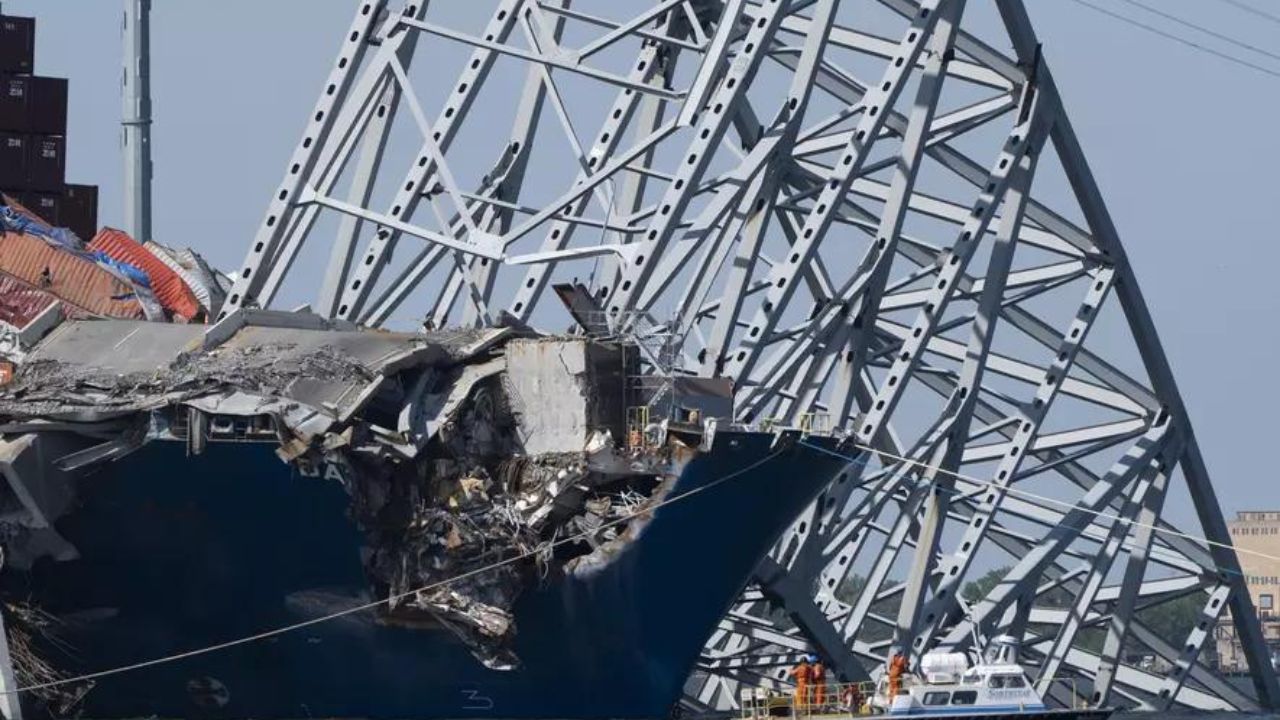Container Ship Electrical Blackouts Investigation: Know More Here
According to congressional testimony on Wednesday, the electrical failures that the container ship Dali encountered before leaving Baltimore’s port were “mechanically distinct from” those that led to the fatal fall of the Francis Scott Key Bridge hours later.

Two had to do with standard port maintenance. According to Jennifer Homendy’s testimony before the National Transportation Safety Board, two of the circuit breakers unexpectedly tripped during the accident cruise.
The Dali was en route to Sri Lanka, loaded with enough food for a month-long cruise and shipping containers. Six construction workers were killed when the ship, which had left the Port of Baltimore early on March 26, lost power and propulsion and collided with one of the supporting columns of the bridge.
The day following the release of the safety board’s preliminary report on the bridge collapse, Homendy made his comments. It can take them a year or longer to complete their inquiry.
According to the report, the ship’s first power outage happened when a crew member unintentionally closed an exhaust damper while performing maintenance in port, resulting in the stalling of one of its diesel engines. After turning on automatically, the backup generator ran for a few while before igniting again due to low fuel pressure, causing a second blackout.
According to safety investigators, crew members altered the ship’s electrical layout while it was recuperating from those power outages by replacing the transformer and breakers.
“Switching breakers is not unusual, but may have affected operations the very next day on the accident voyage,” Homendy testified Wednesday morning before the U.S. House Committee on Transportation and Infrastructure.
According to her, the board is currently collecting additional data to determine the precise reason of the different power outages. The FBI has also started a criminal inquiry into the events leading up to the collapse.
Homendy added that when the Dali got closer to the bridge, the breakers tripped, activating the ship’s emergency generator. That generator can power the ship’s lights, radio, and other functions, but propulsion cannot be restarted.
“Without the propeller turning, the rudder was less effective,” Homendy said. “They were essentially drifting.”
Despite having redundant systems, she claimed that the ship’s emergency generator and other features are similar to those of other ships. To determine what went wrong after the Dali departed the Port of Baltimore, she said detectives are actively collaborating with Hyundai, the company that developed the electrical system.
She also restated another conclusion from the report, namely that there were no issues with the ship’s fuel quality as determined by tests.
Almost immediately following the fall that sent six members of a roadwork crew plummeting to their deaths, the safety board began its inquiry. To record the situation and gather evidence, investigators boarded the ship and took information from the engine room and data recorder.
The preliminary study describes the tumultuous seconds just before the bridge collapsed, as rescuers hurried to deal with a string of electrical outages that occurred one after another just as the catastrophe was about to strike.
Electrical breakers that supplied the majority of the ship’s machinery and lights unexpectedly tripped on March 26, at 1:25 a.m., when the Dali was a little over half a mile from the bridge, resulting in a power outage. The ship lost steering and its cooling pumps malfunctioned, causing the main diesel engine to cut off on its own.
According to the report, crew members were able to manually close the tripped breakers to temporarily restore power.
More tripped breakers caused a second power loss that occurred when the ship was less than a quarter of a mile from the bridge. Power was once more restored by the crew, but it was too late to prevent hitting the bridge.
Police were able to halt traffic after the ship sent out a last-minute Mayday call, but they were unable to alert a group of construction workers who were patching potholes on the bridge in time. From the water, one individual was saved. Just before the bridge collapsed, an inspector of road maintenance also made it out alive by scurrying to safety.
Last Monday, the final body of the six fatalities was pulled from the watery wreckage.
The longest surviving section of the collapsed bridge, which fell across the bow of the Dali, was broken apart by crews on Monday by a controlled demolition. According to officials on Wednesday, the ship should be refloated and navigated back to the Port of Baltimore early the following week.


Comments are closed.